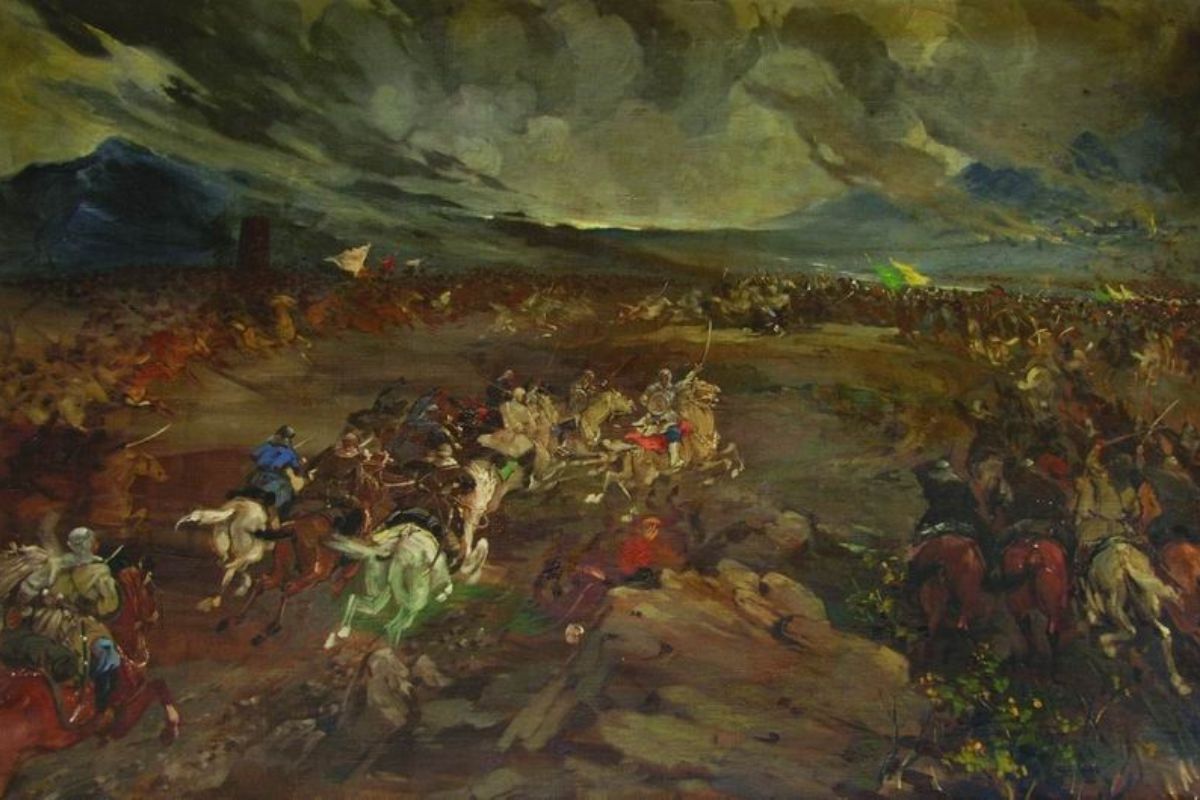
The Battle of Krtsanisi was a pivotal moment in Georgian history, marking a fierce clash between the Kingdom of Kartli-Kakheti and the Persian Empire in 1795. This confrontation wasn't just a fight for territory; it was a struggle for survival and sovereignty. Why did this battle matter so much? It highlighted the resilience of the Georgian people against overwhelming odds. The battle's outcome had long-lasting effects on the region's political landscape, influencing alliances and future conflicts. Understanding this event helps us grasp the complexities of Georgian-Persian relations and the broader historical context of the Caucasus. Dive into these 30 facts to uncover the bravery, strategy, and consequences that defined the Battle of Krtsanisi.
Key Takeaways:
- The Battle of Krtsanisi in 1795 marked the end of Georgian independence for a time, leading to increased Russian influence in the Caucasus and long-term economic and cultural effects on Tbilisi.
- Despite being outnumbered, the Georgian soldiers fought valiantly in the Battle of Krtsanisi, leaving a lasting impact on Georgian history and continuing the resistance against foreign domination.
The Battle of Krtsanisi: An Overview
The Battle of Krtsanisi was a significant event in Georgian history. It took place in 1795 and had lasting impacts on the region. Here are some fascinating facts about this historical battle.
-
The battle occurred on September 8-11, 1795, near Tbilisi, the capital of Georgia.
-
It was fought between the Kingdom of Kartli-Kakheti and the Persian Empire.
-
The Persian forces were led by Agha Mohammad Khan Qajar, the founder of the Qajar dynasty.
-
King Heraclius II commanded the Georgian troops.
The Lead-Up to the Battle
Understanding the events leading up to the battle provides context to its significance. Here are some key points about the prelude to the Battle of Krtsanisi.
-
Tensions had been rising between Persia and Georgia due to territorial disputes.
-
Heraclius II had sought protection from Russia, but the Russian Empire did not provide timely support.
-
Agha Mohammad Khan aimed to reassert Persian dominance over the Caucasus region.
-
The Persian army was well-prepared and significantly larger than the Georgian forces.
The Battle Unfolds
The battle itself was intense and brutal. Here are some details about how it unfolded.
-
The Persian army consisted of around 35,000 soldiers.
-
Georgian forces numbered approximately 5,000 to 7,000 troops.
-
The battle began with a surprise attack by the Persians on the Georgian camp.
-
Despite being outnumbered, the Georgian soldiers fought valiantly.
Key Figures in the Battle
Several important figures played crucial roles in the Battle of Krtsanisi. Here are some notable individuals.
-
Agha Mohammad Khan Qajar was known for his ruthless tactics.
-
King Heraclius II was a seasoned warrior and leader.
-
Prince Solomon II of Imereti also participated in the battle, supporting Heraclius II.
-
Many Georgian nobles and warriors lost their lives defending their homeland.
The Aftermath and Consequences
The aftermath of the Battle of Krtsanisi had significant repercussions for Georgia. Here are some of the consequences.
-
The Persian victory led to the sacking of Tbilisi.
-
Thousands of Georgians were killed or captured during the invasion.
-
The defeat weakened the Kingdom of Kartli-Kakheti.
-
Heraclius II was forced to flee to the mountains for safety.
The Impact on Georgian History
The Battle of Krtsanisi left a lasting impact on Georgian history. Here are some ways it influenced the region.
-
The battle marked the end of Georgian independence for a time.
-
It led to increased Russian influence in the Caucasus.
-
The devastation of Tbilisi had long-term economic and cultural effects.
-
Georgian resistance against foreign domination continued in the years that followed.
Remembering the Battle Today
The Battle of Krtsanisi is remembered and commemorated in various ways. Here are some modern-day references and memorials.
-
A monument in Tbilisi honors the Georgian soldiers who fought in the battle.
-
The battle is a subject of study in Georgian history classes.
-
Annual commemorations take place to remember the fallen heroes.
-
The battle is depicted in Georgian literature and art.
Interesting Tidbits
Here are some lesser-known facts and interesting tidbits about the Battle of Krtsanisi.
-
Agha Mohammad Khan Qajar was assassinated shortly after the battle, in 1797.
-
The battle is sometimes referred to as the "Georgian Thermopylae" due to the bravery of the outnumbered Georgian forces.
The Battle's Lasting Impact
The Battle of Krtsanisi left a significant mark on Georgian history. This 1795 clash saw the Persian army, led by Agha Mohammad Khan, overpowering the Georgian forces. The defeat led to the sacking of Tbilisi, causing immense destruction and loss of life. This battle underscored the vulnerability of Georgia, prompting its eventual decision to seek protection by joining the Russian Empire in 1801.
The aftermath of Krtsanisi reshaped the region's political landscape. It highlighted the strategic importance of alliances and the harsh realities of regional power struggles. The battle also served as a poignant reminder of the resilience and determination of the Georgian people, who rebuilt their capital and continued to fight for their sovereignty.
Understanding the Battle of Krtsanisi offers valuable insights into the complex history of the Caucasus and the enduring spirit of its people.
Frequently Asked Questions
Was this page helpful?
Our commitment to delivering trustworthy and engaging content is at the heart of what we do. Each fact on our site is contributed by real users like you, bringing a wealth of diverse insights and information. To ensure the highest standards of accuracy and reliability, our dedicated editors meticulously review each submission. This process guarantees that the facts we share are not only fascinating but also credible. Trust in our commitment to quality and authenticity as you explore and learn with us.
